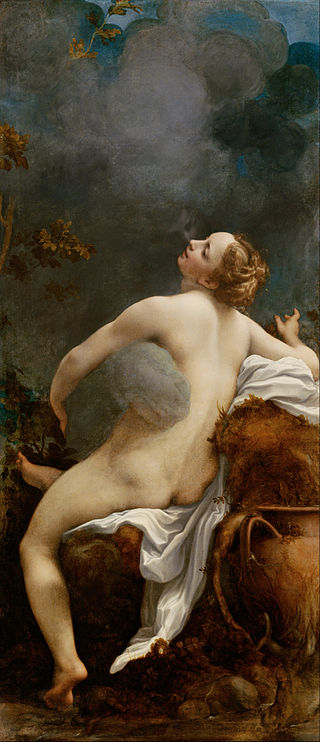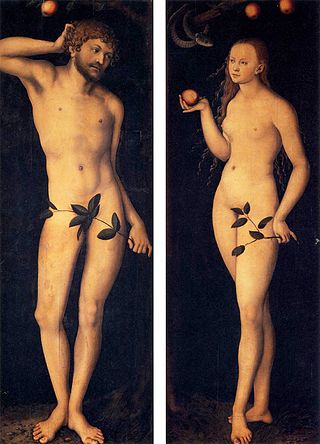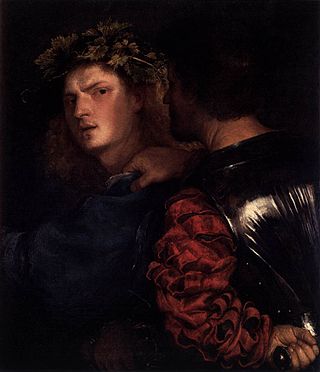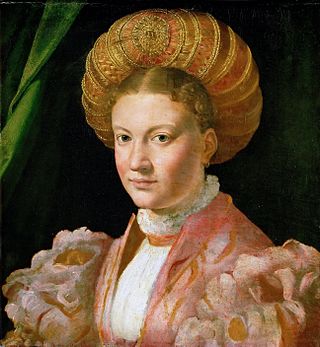
Hans von Aachen was a German painter who was one of the leading representatives of Northern Mannerism.

Domenico Fetti was an Italian Baroque painter who was active mainly in Rome, Mantua and Venice.

Juan de Flandes was a Flemish painter active in Spain from 1496 to 1519. His actual name is unknown, although an inscription Juan Astrat on the back of one work suggests a name such as "Jan van der Straat". Jan Sallaert, who became a master in Ghent in 1480, has also been suggested. He worked in the Early Netherlandish style.

Sebastiano Ricci was an Italian Baroque painter of the late Baroque period in Venetian painting. About the same age as Piazzetta, and an elder contemporary of Tiepolo, he represents a late version of the vigorous and luminous Cortonesque style of grand manner fresco painting.

Bartholomeus Spranger or Bartholomaeus Spranger was a Flemish painter, draughtsman, sculptor, and designer of prints. Working in Prague as a court artist for the Holy Roman emperor Rudolf II, he responded to his patron's aesthetic preferences by developing a version of the artistic style referred to as Northern Mannerism. This style stressed sensuality, which was expressed in smoothly modeled, elongated figures arranged in elegant poses, often including a nude woman seen from behind. Spranger's unique style combining elements of Netherlandish painting and Italian influences, in particular the Roman Mannerists, had an important influence on other artists in Prague and elsewhere, in particular the Dutch Republic, as his paintings were disseminated widely through prints as well as by artists who had worked with him such as Karel van Mander.

Joos van Cleve was a leading painter active in Antwerp from his arrival there around 1511 until his death in 1540 or 1541. Within Dutch and Flemish Renaissance painting, he combines the traditional techniques of Early Netherlandish painting with influences of more contemporary Renaissance painting styles.

Benedetto Caliari (1538–1598) was an Italian painter who was born into a family of artists. Benedetto's father Gabriele Caliari was a stonecutter. Benedetto's brother Paolo Caliari was the renowned painter Veronese.

Michael Sittow, also known as Master Michiel, Michel Sittow, Michiel, Miguel, and several other variants, was a painter from Reval (Tallinn), now capital of Estonia, who was trained in the tradition of Early Netherlandish painting. For most of his life, Sittow worked as a court portrait painter, for Isabella of Castile and her Habsburg relatives in Spain and the Netherlands, and other prominent royal houses. He is considered one of the most important Netherlandish painters of the era.

The Orleans Collection was a very important collection of over 500 paintings formed by Philippe II, Duke of Orléans, mostly acquired between about 1700 and his death in 1723. Apart from the great royal-become-national collections of Europe it is arguably the greatest private collection of Western art, especially Italian, ever assembled, and probably the most famous, helped by the fact that most of the collection has been accessible to the public since it was formed, whether in Paris, or subsequently in London, Edinburgh and elsewhere.

Violante is an oil painting attributed to Titian, dated to around 1515 and now held at the Kunsthistorisches Museum in Vienna.

Adam and Eve is a pair of paintings by German Renaissance master Lucas Cranach the Elder, dating from 1528, housed in the Uffizi, Florence, Italy. There are other paintings by the same artist with the same title, depicting the subjects either together in a double portrait or separately in a pair of portraits, for instance at the Kunsthistorisches Museum in Vienna, the Courtauld Gallery in London, the Museum der bildenden Künste in Leipzig, and the Art Institute of Chicago.

Ganymede Abducted by the Eagle is a painting by the Italian late Renaissance artist Antonio da Correggio. It is housed in the Kunsthistorisches Museum, Vienna, Austria.

The Bravo is an oil painting usually attributed to Titian, dated to around 1516-17 and now in the Kunsthistorisches Museum in Vienna. The painting can be seen as one of a number of Venetian paintings of the 1510s showing two or three half-length figures with heads close together, often with their expressions and interactions enigmatic. Most of these are "Giorgionesque" genre or tronie subjects where the subjects are anonymous, though the group includes Titian's The Tribute Money, with Christ as the main figure, which in terms of style is similar to this painting, and his Lucretia and her Husband, also in Vienna, where at least the woman's identity is clear, if not that of the man.

Portrait of Cecilia Gozzadini is an oil painting attributed to Parmigianino, dated to around 1530 and now held at the Kunsthistorisches Museum in Vienna.

Bartolomeo della Nave was a Venetian merchant and art collector.

The painting Adam and Eve by Lucas Cranach the Elder is part of the collections of old European art of the National Gallery Prague. It comes from the Cistercian monastery in Osek near Duchcov, from where it was acquired in 1949.

The Ecce Homo is a large oil painting by Titian, signed and dated 1543, which hangs in the Kunsthistorisches Museum in Vienna. It is not to be confused with several smaller compositions by Titian.

Christ and the Adulteress, also titled Christ and the Woman Taken in Adultery, or The Adulteress before Christ, is an oil painting by Titian, made about 1520, in the Kunsthistorisches Museum, Vienna, depicting Jesus and the woman taken in adultery.


























